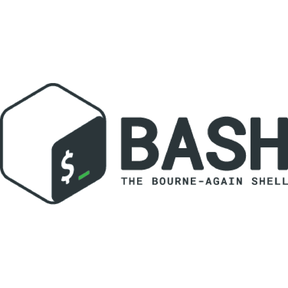If You want to build a website with WordPress at short time;
Plus, manage docker containers with Portainer.
arm64/aarch64, x86-64
apk, dnf, yum, apt/apt-get, zypper
Note: Fedora 37, 39 and alpine linux x86-64 compatible, could not try sles IBM Z s390x, rhel IBM Z s390x and raspberrypi.
- WordPress (php-fpm)
- webserver (nginx)
- certbot (letsencrypt)
- phpMyAdmin
- databaseMariadb databaseMysql
- redis
- varnish
- backup
Create rules to open ports to the internet, or to a specific IPv4 address or range.
- http: 80
- https: 443
- portainer: 9001
- phpmyadmin: 9090
- Auto Configuration and Installation
- Requirements
- Manual Configuration and Installation
- Portainer Installation
- Usage
download with
git clone https://github.com/damalis/full-stack-nginx-wordpress-for-everyone-with-docker-compose.git
Open a terminal and cd to the folder in which docker-compose.yml is saved and run:
cd full-stack-nginx-wordpress-for-everyone-with-docker-compose
chmod +x install.sh
./install.sh
Make sure you have the latest versions of Docker and Docker Compose installed on your machine and require up to 2 GB of RAM.
Clone this repository or copy the files from this repository into a new folder.
Make sure to add your user to the docker group.
download with
git clone https://github.com/damalis/full-stack-nginx-wordpress-for-everyone-with-docker-compose.git
Open a terminal and cd to the folder in which docker-compose.yml is saved and run:
cd full-stack-nginx-wordpress-for-everyone-with-docker-compose
Copy the example environment into .env
cp env.example .env
Edit the .env file to change values of LOCAL_TIMEZONE, DOMAIN_NAME, DIRECTORY_PATH, LETSENCRYPT_EMAIL, WORDPRESS_DB_USER, WORDPRESS_DB_PASSWORD, WORDPRESS_DB_NAME, WORDPRESS_TABLE_PREFIX, MYSQL_ROOT_PASSWORD, DATABASE_IMAGE_NAME, DATABASE_CONT_NAME, DATABASE_PACKAGE_MANAGER, DATABASE_ADMIN_COMMANDLINE, PMA_CONTROLUSER, PMA_CONTROLPASS, PMA_HTPASSWD_USERNAME, PMA_HTPASSWD_PASSWORD and VARNISH_VERSION.
LOCAL_TIMEZONE=to see local timezones
DIRECTORY_PATH=pwd at command line
DATABASE_IMAGE_NAME=mariadb or mysql
DATABASE_CONT_NAME=mariadb, mysql or custom name
DATABASE_PACKAGE_MANAGER=apt-get update && apt-get install -y gettext-base for mariadb, microdnf install -y gettext for mysql
DATABASE_ADMIN_COMMANDLINE=mariadb-admin for mariadb, mysqladmin for mysql
VARNISH_VERSION=latest for centos version 9+ and fedora, stable for the others
and
cp ./phpmyadmin/apache2/sites-available/default-ssl.sample.conf ./phpmyadmin/apache2/sites-available/default-ssl.conf
change example.com to your domain name in ./phpmyadmin/apache2/sites-available/default-ssl.conf file.
cp ./database/phpmyadmin/sql/create_tables.sql.template.example ./database/phpmyadmin/sql/create_tables.sql.template
change pma_controluser and db_authentication_password in ./database/phpmyadmin/sql/create_tables.sql.template file.
Firstly: will create external volume
docker volume create --driver local --opt type=none --opt device=${PWD}/certbot --opt o=bind certbot-etc
docker compose up -d
then reloading for webserver ssl configuration
docker container restart webserver
The containers are now built and running. You should be able to access the WordPress installation with the configured IP in the browser address. https://example.com.
For convenience you may add a new entry into your hosts file.
docker compose -f portainer-docker-compose.yml -p portainer up -d
manage docker with Portainer is the definitive container management tool for Docker, Docker Swarm with it's highly intuitive GUI and API.
You can also visit https://example.com:9001 to access portainer after starting the containers.
The docker ps command only shows running containers by default. To see all containers, use the -a (or --all) flag:
docker ps -a
You can start the containers with the up command in daemon mode (by adding -d as an argument) or by using the start command:
docker compose start
docker compose stop
To stop and remove all the containers use the down command:
docker compose down
to remove portainer and the other containers:
docker rm -f $(docker ps -a -q)
Use -v if you need to remove the database volume which is used to persist the database:
docker compose down -v
to remove external certbot-etc and portainer and the other volumes:
docker volume rm $(docker volume ls -q)
Delete all images, containers, volumes, and networks that are not associated with a container (dangling):
docker system prune
To additionally remove any stopped containers and all unused images (not just dangling ones), add the -a flag to the command:
docker system prune -a
to remove portainer and the other images:
docker rmi $(docker image ls -q)
Copy all files into a new directory:
You can now use the up command:
docker compose up -d
https://docs.docker.com/engine/reference/run/
You should see the "Wordpress installation" page in your browser. If not, please check if your PHP installation satisfies WordPress's requirements.
https://example.com
add or remove code in the ./php-fpm/php/conf.d/security.ini file for custom php.ini configurations
https://www.php.net/manual/en/configuration.file.php
You should make changes custom host configurations ./php-fpm/php-fpm.d/z-www.conf then must restart service, FPM uses php.ini syntax for its configuration file - php-fpm.conf, and pool configuration files.
https://www.php.net/manual/en/install.fpm.configuration.php
docker container restart wordpress
add and/or remove wordpress site folders and files with any ftp client program in ./wordpress folder.
You can also visit https://example.com to access website after starting the containers.
add or remove code in the ./webserver/templates/nginx.conf.template file for custom nginx configurations
https://docs.nginx.com/nginx/admin-guide/basic-functionality/managing-configuration-files/
add and active Redis Cache plugin and
must add below code in wp-config.php file.
define('WP_REDIS_HOST', 'redis');
define('WP_CACHE_KEY_SALT', 'wp-docker-7f1a7682-9aec-4d4b-9a10-46bbadec41ba');
define('WP_REDIS_PREFIX', $_SERVER['HTTP_HOST']);
define('WP_REDIS_CONFIG', [
'prefix' => getenv('WP_REDIS_PREFIX') ?: null,
'timeout' => 0.5,
'read_timeout' => 0.5,
'async_flush' => true,
'compression' => 'zstd',
'serializer' => 'igbinary',
'split_alloptions' => true,
'debug' => false,
'save_commands' => false,
]);
add and active Proxy Cache Purge plugin.
Go to the WordPress dashboard
Click on Plugins
Click on Add New
Search for the Redis Cache / the Proxy Cache Purge plugin
Click on Install Now and confirm
Finally, activate the plugin
add this code to connect always with ssl in wp-config.php file.
define('FORCE_SSL_LOGIN', true);
define('FORCE_SSL_ADMIN', true);
after every change in the wordpress and the varnish configuration or if You get error "502 Bad Gateway":
docker container restart varnish
You can add your own custom config.inc.php settings (such as Configuration Storage setup) by creating a file named config.user.inc.php with the various user defined settings in it, and then linking it into the container using:
./phpmyadmin/config.user.inc.php
You can also visit https://example.com:9090 to access phpMyAdmin after starting the containers.
The first authorize screen(htpasswd;username or password) and phpmyadmin login screen the username and the password is the same as supplied in the .env file.
This will back up the all files and folders in database/dump sql and html volumes, once per day, and write it to ./backups with a filename like backup-2023-01-01T10-18-00.tar.gz
BACKUP_CRON_EXPRESSION: '20 01 * * *' the UTC timezone.
